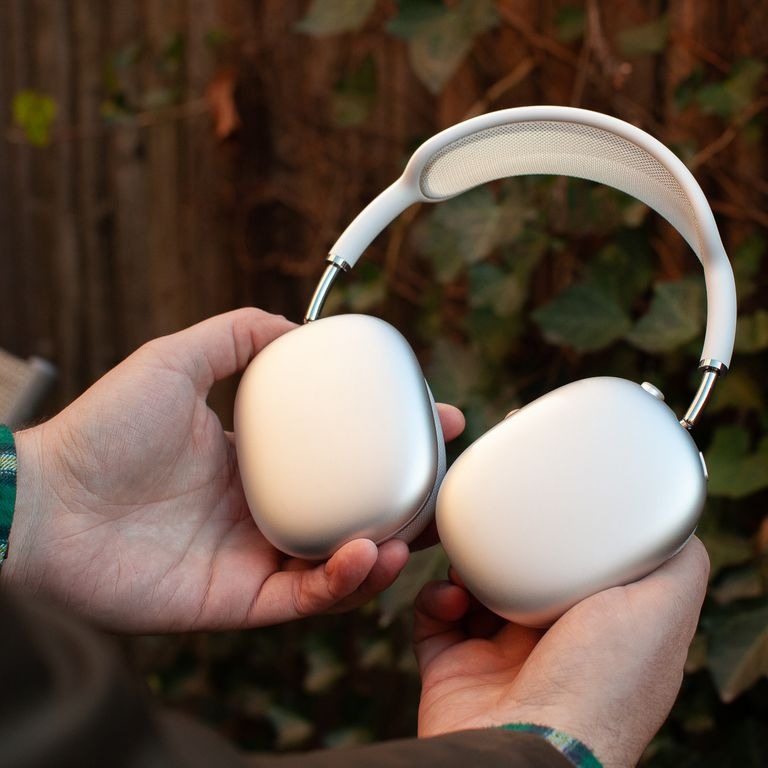Noise cancelling headphones have garnered significant attention in recent years, particularly due to their ability to create an immersive listening experience by effectively reducing unwanted ambient sounds. Understanding how do noise cancelling headphones work can provide valuable insights into the technology behind them and enhance our appreciation for their functionality. Here’s a detailed breakdown of how they operate and their benefits.
The Basics of Noise Cancellation Technology
Noise cancellation technology is increasingly sought after in a world full of distractions and constant noise. It’s the magic behind quiet workspaces and peaceful commutes. As you dive deeper into the world of noise-cancelling headphones, understanding the basics is key. Let’s unwrap the layers of how this technology actually works.
How Sound Travels and the Role of Mediums
To grasp noise cancellation, first, understand how sound travels. Sound needs a medium, like air or water, to carry its waves to your ears. In a room with music playing, air is that medium. But remove the air, and you’d hear nothing. Mediums are essential for sound travel, and this concept is fundamental to noise-cancelling technology.
The Science Behind Active Noise Cancellation (ANC)
ANC takes a proactive approach to silence unwanted noise. It uses the principle of sound wave inversion. This means, it produces sounds that counteract external noise. Essentially, it’s like using a reverse sound wave to ‘cancel out’ the noise around you. This effect results in a quieter environment, allowing you to focus on your music or work.
Passive vs. Active Noise Cancellation
While ANC actively cancels out sound, passive noise cancellation relies on physical barriers. Think of over-ear headphone cups that block out noise by creating a seal around your ears. Both methods have their place, but ANC is often seen as the more high-tech solution. It targets and reduces ambient noise using the power of sound waves, rather than merely trying to block it out.
How Noise Cancelling Headphones Work

Understanding how noise cancelling headphones work is key to appreciate their value.
The Role of Built-in Microphones
Built-in microphones are essential in noise cancelling headphones. They detect unwanted sounds around you. Based on this input, the headphones create sound waves that can cancel noise.
The Process of Sound Wave Neutralization
The headphones use the opposing sound waves to cancel out noise. They meet the external noise and reduce it before it reaches your ears. This makes your listening experience much quieter.
The Impact of Pitch Levels on Noise Cancellation Efficacy
Low and constant noises are best reduced by noise cancelling headphones. However, variable pitch sounds, like speaking, are harder to cancel out fully. The tech works less on high-pitched noises.
Types of Noise Cancellation
Noise cancelling headphones use various technologies to create a serene listening environment. Let’s explore the different types available today.
Adaptive Active Noise Cancellation
Adaptive ANC adjusts to your surroundings automatically. It ramps up or down based on the noise level around you. This smart feature offers personalized noise control without manual adjustments.
Adjustable Active Noise Cancellation
Adjustable ANC allows you to control noise cancellation levels. You can choose how much outside noise to block out. This type is ideal for those who need flexibility in varying noise environments.
Transparency Mode and Ambient Sound Features
Transparency mode lets you hear important sounds without removing your headphones. It’s a safety feature for when you need to be aware of your surroundings. Ambient sound features enhance certain noises while keeping music clear and undisturbed.
Real-World Applications
Active Noise Cancellation (ANC) technology has practical uses in daily life. It improves listening experiences in many settings.
Using ANC Headphones in Various Environments
ANC headphones can transform various environments:
- Commuting: They dampen train or bus engine sounds for a peaceful journey.
- Workplaces: Enhance focus by reducing office noise like typing or chatter.
- Flights: Cut down on the constant drone of aircraft engines, aiding rest.
Different noises need different ANC approaches. Low, steady sounds get reduced more than quick, high ones.
Noise Cancellation During Phone Calls
ANC helps the caller, not the receiver. It does not stop the person you’re calling from hearing background noise.
Safety Considerations with ANC Headphones
Be aware when using ANC headphones:
- Safety: It’s vital to hear traffic or warnings. Use transparency mode in such situations.
- Driving: Never wear ANC headphones. You must be able to hear external sounds for safety.
ANC technology is great, but remember to use it wisely and stay safe.
Limitations and Considerations

As with any technology, noise cancelling headphones have their limitations. Understanding these can help set the right expectations and ensure you’re satisfied with your purchase.
Expectations from Noise Cancellation Technology
Expect noise cancellation to work best with constant, low-frequency sounds. High-pitched or varying noises may still break through. Active Noise Cancellation (ANC) technology aims to reduce distracting noise, but complete silence is not guaranteed. Remember, the effectiveness can vary depending on the environment and the way you wear your headphones. Additionally, while ANC can enhance your listening experience, it may not offer the same benefits during phone calls since the technology is designed for the wearer, not the call receiver.
Instances Where ANC May Not Be Effective
Certain situations challenge ANC headphones. Quick, high-pitched sounds, like a baby crying or sudden alarms, often pierce through the ANC barrier. Your headphones might also struggle in very noisy environments or if they don’t fit well. Interference from electronics, like mobile phones, can affect performance as well. In peaceful settings, turning on ANC may not make a noticeable difference and could even introduce unwanted sounds or reduce battery life quicker than normal. Moreover, for your safety, avoid using ANC in situations where you need to hear your surroundings, such as when driving or walking in busy streets.
Selecting the Right Noise Cancelling Headphones
When picking ANC headphones, several factors matter. They shape your listening experience and comfort.
Factors to Consider When Choosing ANC Headphones
- Type of ANC: Choose between adaptive, adjustable, or standard ANC based on your needs.
- Sound Quality: High-quality audio is key even with ANC on.
- Comfort: Ensure they fit well and feel good for long periods.
- Battery Life: Longer battery life means less charging, more listening.
- Price: More features often mean a higher price. Find a balance.
- Brand and Reviews: Look for trusted brands and check user reviews.
With these in mind, you can narrow down options.
How to Find the Best Noise Cancelling Headphones for Your Needs
Here’s a simple guide to find your ideal ANC headphones:
- Research: Start with online research using keywords like ‘how do noise cancelling headphones work’.
- Compare: Look at different brands and models.
- Test: If possible, try them on for fit and sound.
- Read Reviews: What are others saying about performance and comfort?
- Check Features: Does it have transparency mode or ambient sound control?
By considering these steps, you’ll find headphones that balance noise cancellation, quality, and value.
Future Innovations in Noise Cancelling Technology

As technology continues to advance, the future of noise cancelling headphones looks promising. Manufacturers are constantly researching and developing new technologies to enhance noise cancellation features and improve user experience. Upcoming trends suggest the integration of artificial intelligence (AI) to optimize noise cancelling performance. AI can learn from its environment and adapt to different noise profiles, allowing for a more dynamic and responsive listening experience.
Moreover, the incorporation of adaptive soundscapes is another exciting trend. This feature could allow headphones to blend the surrounding sounds harmoniously rather than eliminating them entirely, which might benefit users in environments where some ambient awareness is necessary, such as walking in traffic.
Battery life is also a significant focus for innovation. Many users find that prolonged use of their headphones drains the battery quickly, particularly during long flights or daily commutes. The development of more efficient battery technology will allow users to enjoy extended listening sessions without the constant need for recharging.
In considering how do noise cancelling headphones work, it is evident that this technology is not only revolutionizing how we consume audio content but is also positioned for continual improvement to meet the evolving needs of its users. As advancements continue to emerge, the future looks bright for anyone seeking to embrace a noise-free auditory experience.









